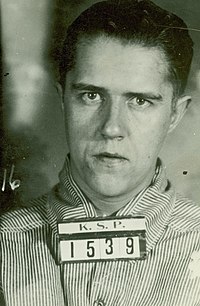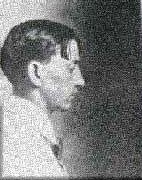Geng Barker—Karpis
Geng Barker–Karpis adalah salah satu geng kriminal yang berumur paling lama selama Era Depresi, mulai dari tahun 1931 hingga 1935. Geng ini didirikan oleh Fred Barker dan Alvin Karpis, dan kemudian bergabung dengan saudara laki-laki Fred Arthur "Doc" Barker. Bersama dengan tiga anggota inti, jaringan geng tersebut mencakup hingga 25 anggota pada satu titik.
Meskipun tidak setenar Geng Dillinger, atau Geng Barrow, Geng Barker–Karpis mungkin lebih kejam, tidak hanya melakukan perampokan bank, tetapi juga memperluas aktivitasnya hingga penculikan..[1] Hal ini terkenal karena mitos yang dijalankan oleh ibu Barker bersaudara, Kate, biasanya disebut sebagai "Ma Barker".
Foundations
The Barker–Karpis gang was put together by Fred Barker and Alvin Karpis in March 1931. Barker and Karpis had met in the Kansas State Penitentiary, and upon Karpis's release in March 1931, started to form the gang. The gang began robbing banks starting in mid-1931, but on December 19 of that year, they killed Howell County Sheriff Calvin Roy Kelly in West Plains, Missouri. They fled to Joplin, and then to Saint Paul, Minnesota, where Jewish-American organized crime boss Harry Sawyer (born Harry Sandlovich) found them a house at 1031 Roberts Road, owned by Helen Hannegraff. They used the name "Anderson", but a few weeks later, Helen's son Nick recognized Alvin's and Fred's photos in a copy of True Detective Magazine, and contacted the police. St. Paul's corrupt chief of police, Thomas Brown, tipped the Barkers off and they left town. Doc Barker later joined the gang in 1932 after he was paroled from the Oklahoma State Penitentiary in McAlester, where he had been serving a life sentence for the murder of night watchman Thomas J. Sherrill in 1921. The gang was led by the three of them, although many others rotated in and out of the gang including Chicago Outfit mobster Fred Goetz and Volney Davis. The gang continued their bank robbing activities until mid-1933, when they decided that robbing banks was becoming risky, and therefore decided to diverge into the field of kidnapping.[2] Their graduation to more serious crime was mentored by Detective Brown.[3]




